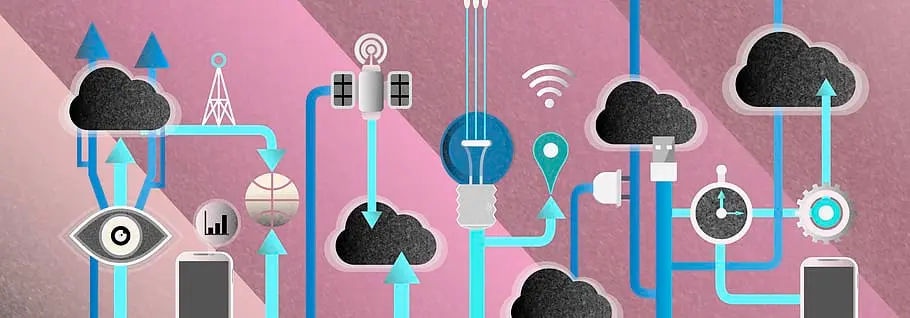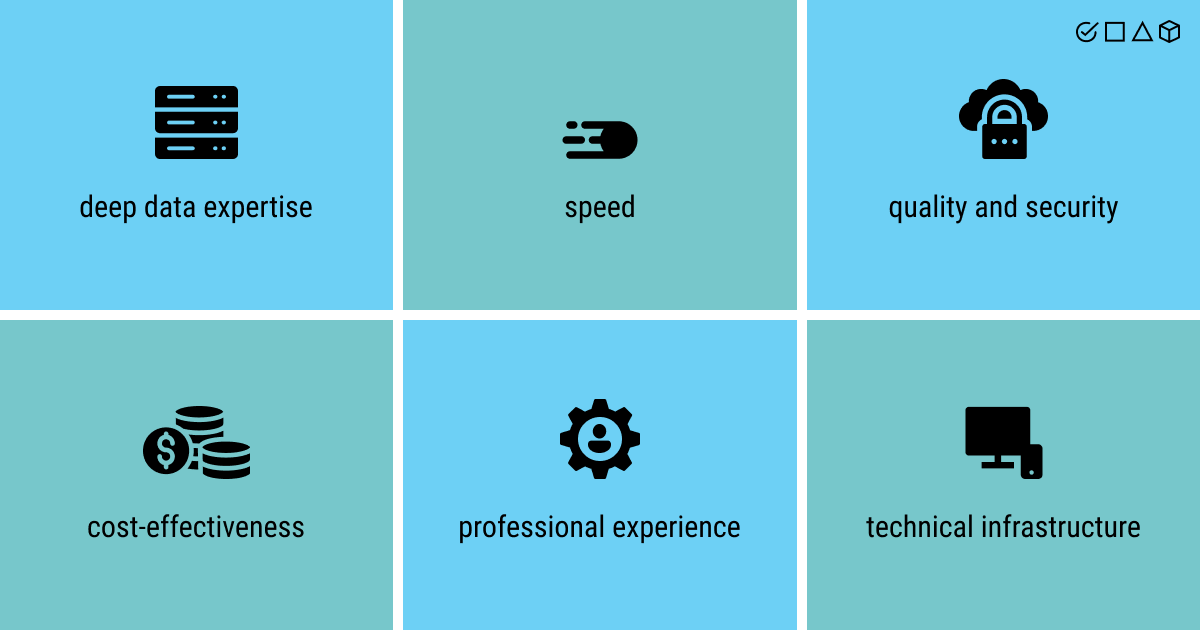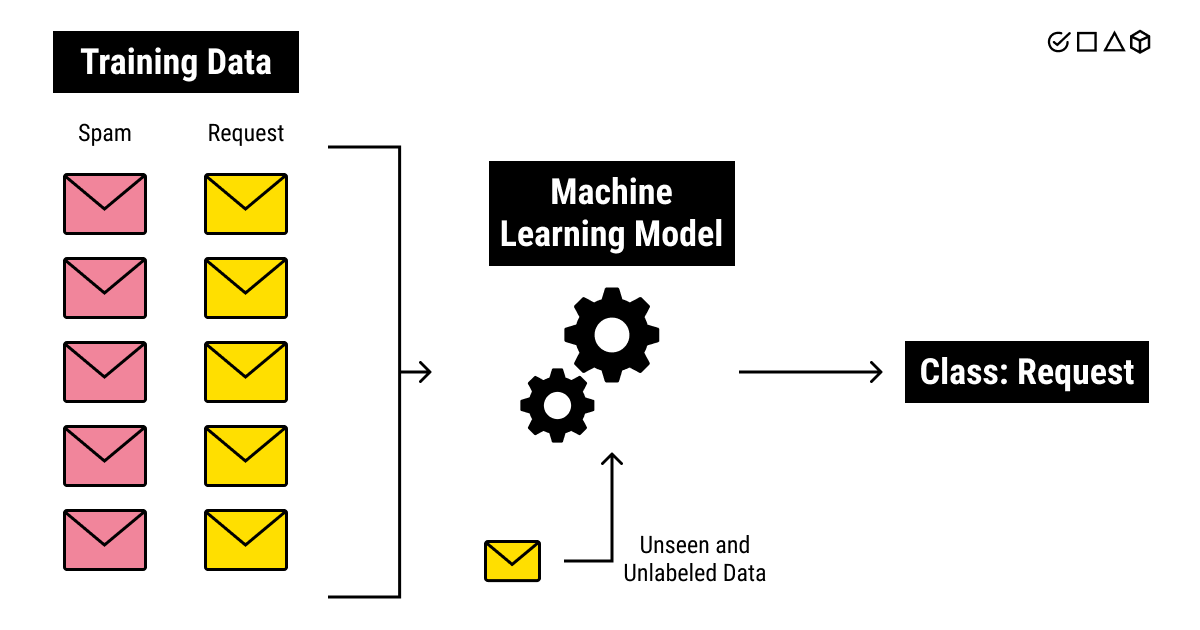Outsourcing data annotation services for machine learning, is it a good idea?

Among the most essential processes in any algorithm or AI project is data annotation. It entails taking raw datasets and labeling or tagging the data that the systems will have to learn.
There are many various kinds of data annotation services that can be executed based on the specific needs and specifications of the company generating it.
Annotating sets of data is a time-consuming process, which is why many companies choose to outsource it. In this article, we'll go over all of the advantages of outsourcing data labeling and how they can help you save a lot of time and money.
Let's take a deeper look at data annotation outsourcing. Firstly, lets us understand some of the data annotation approaches.

Understanding Data Labeling
Data labeling is providing context for raw data, such as images, text files, videos, and audio so that a machine-learning model can learn from it by adding one or more relevant and useful labels. The labels specify which data vectors should be used for model training, which is how the model improves its ability to predict the future. For a number of use cases, such as computer vision, natural language processing, and speech recognition, data labeling is necessary.
The Challenges of In-House Data Labeling
In-house data labeling might be difficult for a number of reasons. The following are some difficulties with in-house data labeling:
- Expensive
Construction of the necessary infrastructure and personnel training for in-house data labeling can be extremely expensive. Investment of time, money, and resources is necessary.
- Time-consuming
Internal data labeling takes far longer than outsourced work since it takes a lot of time to teach the staff the procedures, tools, and processes.
- Workforce Management
Employer management It can be difficult to lead a data annotation or labeling team because it necessitates controlling a sizable and diverse group.
- Consistent Dataset Quality
When labeling data, quality is just as important as quantity, and businesses must strike a delicate balance between fast-growing their staff and managing such a sizable group.
- Keeping Track of Financial Costs
Due to the time and training required to attain true proficiency, small, in-house manual data labeling teams are expensive.
Businesses should explore outsourcing data labeling services as a solution to these problems because it can help them save time and money. However, contracting out data labeling tasks is less secure than doing it inside.
Let’s explore various data annotation approaches and the benefits of outsourcing data labeling.
What are Some of the Data annotation Approaches?
Here are some of the efficient data labeling strategies that you can follow while following any of the approaches.
1. In-house
Within an organization, specialists perform in-house data labeling, which guarantees the best possible level of labeling.
When you have sufficient time, human, and financial resources, it's the best option because it offers the highest level of labeling accuracy. On the other hand, it moves slowly.
For sectors like finance or healthcare, high-quality labeling is essential, and it frequently necessitates meetings with specialists in related professions.
2. Outsourcing
For building a team to manage a project beyond a predetermined time frame, outsourcing data annotation services is a smart choice.
You can direct candidates to your project by promoting it on job boards or your business's social media pages. Following that, the testing and interviewing procedure will guarantee that only people with the required skill set join your labeling team.
This is a fantastic approach to assembling a temporary workforce, but it also necessitates some planning and coordination because your new employees might need the training to be proficient at their new roles and carry them out according to your specifications.
3. Crowdsourcing
The method of gathering annotated data with the aid of a sizable number of independent contractors enrolled at the crowdsourcing platform is known as crowdsourcing.
The datasets that have been annotated are primarily made up of unimportant information like pictures of flora, animals, and the surroundings. Therefore, platforms with a large number of enrolled data annotators are frequently used to crowdsource the work of annotating a basic dataset.
4. Synthetic
The synthesis or generation of fresh data with the properties required for your project is known as synthetic labeling. Generative adversarial networks are one technique for synthetic labeling (GANs).
A GAN integrates various neural networks (a discriminator and a generator) that compete to discriminate between real and false data and produce fake data, respectively. As a result, the new facts are very realistic.
You can generate brand-new data from already existing datasets using GANs and other synthetic labeling techniques. They are hence good at creating high-quality data and are time-effective. Synthetic labeling techniques, however, currently demand a lot of computational power, which can render them quite expensive.
The Benefits of Outsourcing Data Labeling

Look at these ways on why Outsourcing can be considerable for you
1. Your dataset will get expertise from expert data annotators
Data annotators are well-trained professionals with the necessary domain knowledge. While data annotation may be one of your internal talent pool's tasks, it is the only specialized job for data experts.
This makes a significant difference because annotators will know which annotation methods work best for particular data types, how to annotate mass data, clean unstructured and semi - structured data, organize new sources for varied dataset types, and much more.
With so many delicate factors at stake, data annotators or data vendors would make sure the final data that users will receive is flawless and can be straightforwardly fed into the AI model for testing and training purposes.
2. Offers Scalability
You are always in a situation of uncertainty when developing an AI model. Visitors never know when you'll need more data or when you'll need to put a stop to training data processing for a while.
Scalability is critical to ensuring that your AI development process runs smoothly, and this cannot be achieved solely through your in-house professionals.
Only professional data annotators can keep up with evolving demands and produce required volumes of datasets on a consistent basis. At this point, keep in mind that delivering datasets is not as important as delivering machine-feedable datasets.
3. Enhances the speed and efficiency
Depending upon the internal team for annotation may cause your project to be delayed because these employees have full-time obligations in addition to annotating numerous images.
These employees will also require some training and ramp-up time. Slower time-to-completion may be acceptable if your project is not urgent, but many businesses with ML projects are under stress to get a product into the marketplace before competitors.
It can make all the difference between months and months if you outsource the annotation task to a highly-skilled, dedicated team.
Another advantage of outsourcing is that the system can quickly acquire data annotators with particular requirements, like native speakers for a specific demographic, and can easily raise and slope down the number of annotation workforce as project needs change.
4. Ensure high-quality data training

Get a high-quality training data
The accuracy and quality of training data are essential for the success of a pattern recognition solution. Regardless of how well-funded your project is, the quality of the annotated data can determine its fate.
Professional teams, skilled experts who work much faster and much more accurately than most internally resourced teams, are a significant benefit of outsourcing data annotation.
They have significant exposure to instructional regulations and purpose-built data annotation tools, and they are used to dealing with large amounts of data. This means they can maintain a high level of precision while retaining the speed and efficiency required to complete your project on time.
5. Remove Internal Bias
When you think about it, an organization is trapped in tunnel vision. Every employee or team member may have overlapping beliefs due to protocols, processes, workflows, methods, ideologies, work culture, and other factors.
And when such unified forces operate on annotating data, bias can be creeping in.
And no bias has ever created positive reports for an AI developer anywhere in the world. Bias means that the machine learning models are biased towards certain beliefs and are not delivering objectively analyzed results as they should. Bias could cost you your company's reputation.
That is why you need a fresh set of eyes to keep an eye out for sensitive issues like these and to keep identifying and eradicating bias from systems.
Conclusion
Outsourcing the data annotation services is a significantly better option because you can get much more annotation tasks completed for a lower cost.
In addition, an accomplished service provider, such as an expert will guide you through the execution process by providing best-practice insights gleaned from many years of successfully realizing data annotation projects.
If you don't know what and how to look for it, it can be not easy to find an organization that can help you with outsourcing data labeling.
Even tasks that only demand labeled data must be completed precisely because the accomplishment of your project is dependent on it. Labellerr understands the significance of data annotation services and data protection, which is why businesses of all sizes, from startups to large corporations, entrust us with their data annotation requirements.
Contact us today to find out more about what we have to offer you, or visit our website to learn about the results we've achieved for our clients.
FAQS
- Why should I outsource data labeling?
There are various advantages to outsourcing data labeling. First of all, it enables you to benefit from the knowledge of specialized experts who are adept in data annotation and labeling activities. This guarantees that the labeled data for your machine learning models are of high quality and accuracy. Additionally, by focusing on your core business operations while the labeling is performed externally, outsourcing data labeling may help you save time and money.
2. What factors should I consider when selecting a data labeling service provider?
There are a number of things to consider when choosing a data labeling service provider. Assess their experience and knowledge in your particular sector or field first. Choose service providers who have a history of providing high-quality labeled data. As your demands for data labeling may change over time, it's also critical to think about how scaleable they are. Other significant considerations are cost, turnaround time, data privacy policies, and the capacity to handle a variety of data formats.
3. How can I ensure data security when outsourcing data labeling?
If data labeling is outsourced, data security is of utmost importance. You should extensively vet potential service providers and evaluate their security policies and methods to ensure data protection. A service with strong data security procedures, such as encryption, access restrictions, and secure storage systems, is one you should look for. Non-disclosure agreements (NDAs) may also be used to preserve the confidentiality of your data legally.
4. How can I implement a successful outsourcing strategy?
Define your goals and requirements first to successfully implement an outsourcing plan. Find the best service providers by conducting extensive research. Create an evaluation process that takes quality, scalability, security, and cost into account. Establish a good collaboration by regularly communicating your expectations and soliciting feedback. To make sure the labeled data fits your criteria, keep an eye on its development and quality. Review and refine your plan frequently to account for developing requirements and technological advancements.

Simplify Your Data Annotation Workflow With Proven Strategies
.png)


